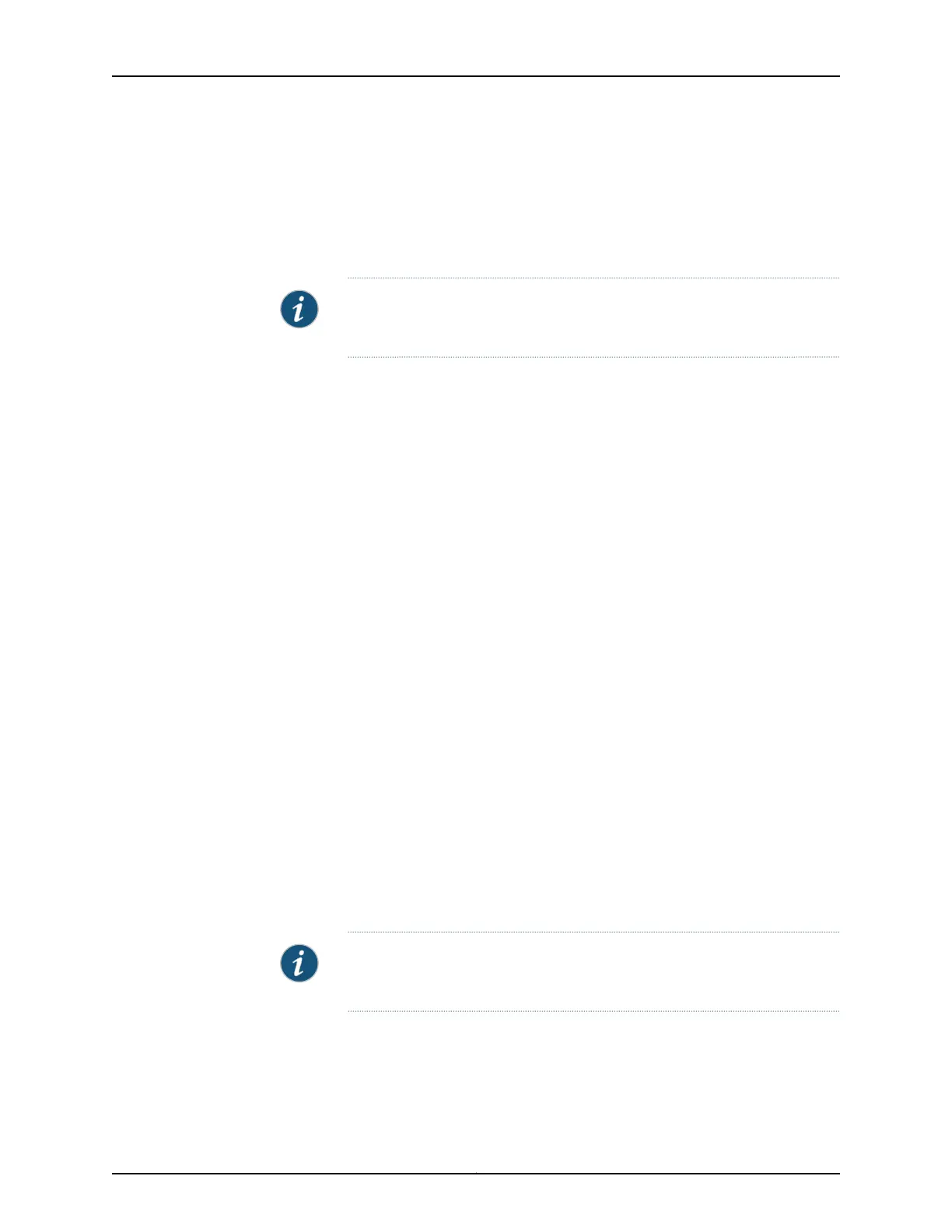You can configure this statement at the following hierarchy levels:
•
[edit routing-instances routing-instance-name routing-options]
•
[edit logical-systems logical-system-name routing-instances routing-instance-name
routing-options]
NOTE: The [edit logical-systems] hierarchy level is not applicable in ACX
Series routers.
To configure the label allocation policy, include the label-allocation statement at the
[edit policy-options policy-statement policy-statement-name term term-name then]
hierarchy level. You can configure the label allocation mode as either per-nexthop or
per-table.
For a VPN option B ASBR, labels for transit routes are substituted for a local virtual tunnel
label or vrf-table-label label. When a VRF table is configured on the ASBR (this type of
configuration is uncommon for the option B model), the ASBR does not generate MPLS
swap or swap and push state for transit routes. Instead, the ASBR re-advertises a local
virtual-tunnel or vrf-table-label label and forwards that transit traffic based on IP
forwarding tables. The label substitution helps to conserve labels on Juniper Networks
routers.
However, this type of label substitution effectively breaks the MPLS forwarding path,
which becomes visible when using an MPLS OAM command such as LSP ping. You can
configure the way in which labels are substituted on a per-route basis by specifying a
label substitution policy.
To specify a label substitution policy for the routing instance, configure the label statement
and specify a label substitution policy using the substitution option:
label {
substitution label-substitution-policy;
}
You can configure this statement at the following hierarchy levels:
•
[edit routing-instances routing-instance-name routing-options]
•
[edit logical-systems logical-system-name routing-instances routing-instance-name
routing-options]
NOTE: The [edit logical-systems] hierarchy level is not applicable in ACX
Series routers.
The label substitution policy is used to determine whether or not a label should be
substituted on an ASBR router. The results of the policy operation are either accept (label
substitution is performed) or reject (label substitution is not performed). The default
behavior is accept. The following set command example illustrates how you can configure
851Copyright © 2017, Juniper Networks, Inc.
Chapter 26: Configuring Layer 3 VPNs

